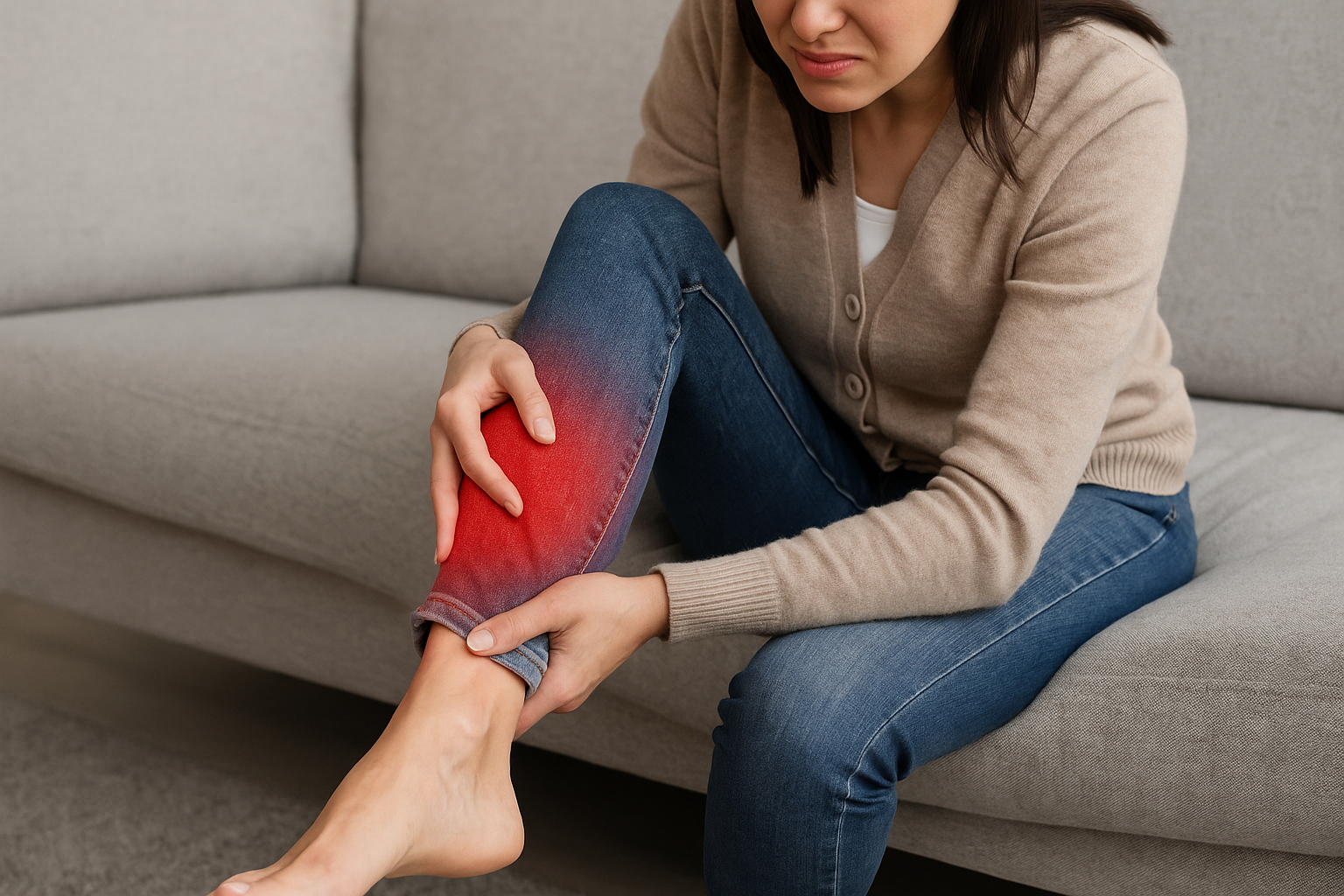What Is Lower Leg Syndrome?
Lower Leg Syndrome isn’t a single disease—it refers to a variety of conditions that cause chronic pain, discomfort, or dysfunction in the lower legs. These conditions are increasingly common, especially among people who sit or stand for long hours, athletes, the elderly, and individuals with vascular or neurological disorders.
🔍 Common Conditions Under Lower Leg Syndrome
1. Chronic Venous Insufficiency (CVI)
- Cause: Poor circulation from damaged veins or valves
- Symptoms: Swelling, aching, heaviness, varicose veins
- Risk Factors: Standing for long hours, obesity, pregnancy
2. Peripheral Artery Disease (PAD)
- Cause: Narrowed arteries reduce blood flow to limbs
- Symptoms: Cramping, pain when walking (claudication), cold legs
- Risk Factors: Smoking, diabetes, high cholesterol
3. Restless Legs Syndrome (RLS)
- Cause: Neurological condition
- Symptoms: Uncontrollable urge to move legs, especially at night
- Associated With: Iron deficiency, kidney disease, pregnancy
4. Shin Splints
- Cause: Overuse or repetitive stress injury
- Symptoms: Pain along the inner part of the lower leg
- Seen In: Runners, dancers, military recruits
5. Compartment Syndrome
- Cause: Increased pressure in leg muscles
- Symptoms: Intense pain, tightness, numbness
- Can Be: Acute (medical emergency) or chronic (exercise-induced)
⚠️ Common Symptoms of Lower Leg Disorders
- Persistent or intermittent pain
- Swelling of ankles or calves
- Tingling or numbness
- Heaviness or tiredness
- Restlessness, especially at night
- Skin discoloration or ulcers in severe cases
🧪 Diagnostic Tools
- Doppler ultrasound (for vascular issues)
- MRI/CT scan (for nerve/muscle conditions)
- Blood tests (to detect inflammation, deficiencies)
- Nerve conduction studies
- Physical examination and patient history
🩹 Treatment Options for Lower Leg Syndrome
🩻 Medical Management
- Compression stockings for venous insufficiency
- Medications like aspirin, iron supplements, or dopamine agonists
- Vasodilators for PAD
- Anti-inflammatories or pain relievers
🧘♀️ Lifestyle Modifications
- Regular exercise and stretching
- Avoiding prolonged sitting or standing
- Elevating legs to reduce swelling
- Weight loss and smoking cessation
🧠 Neurological Treatments
- RLS: Gabapentin, iron therapy, lifestyle management
🔪 Surgical Interventions
- Varicose vein ablation
- Bypass surgery for PAD
- Fasciotomy for compartment syndrome
🛡️ Prevention Tips for Lower Leg Syndrome
- Maintain healthy circulation through daily walking or cycling
- Avoid tight clothing or prolonged immobility
- Hydrate adequately and maintain electrolyte balance
- Monitor diabetes, cholesterol, and blood pressure
- Get early treatment for leg cramps, swelling, or pain
🤔 When to See a Doctor
You should consult a physician if:
- Your leg pain is persistent or worsening
- Swelling doesn’t reduce with rest or elevation
- You feel numbness or burning
- You have a wound or ulcer that won’t heal
- Your leg feels cold or pale compared to the other side
📝 Conclusion
Lower Leg Syndrome is a collective term for painful and sometimes disabling lower limb conditions. Early diagnosis and a combination of lifestyle changes and medical care can significantly reduce symptoms and prevent serious complications. Don’t ignore persistent leg symptoms—seek medical advice to stay mobile and pain-free.




